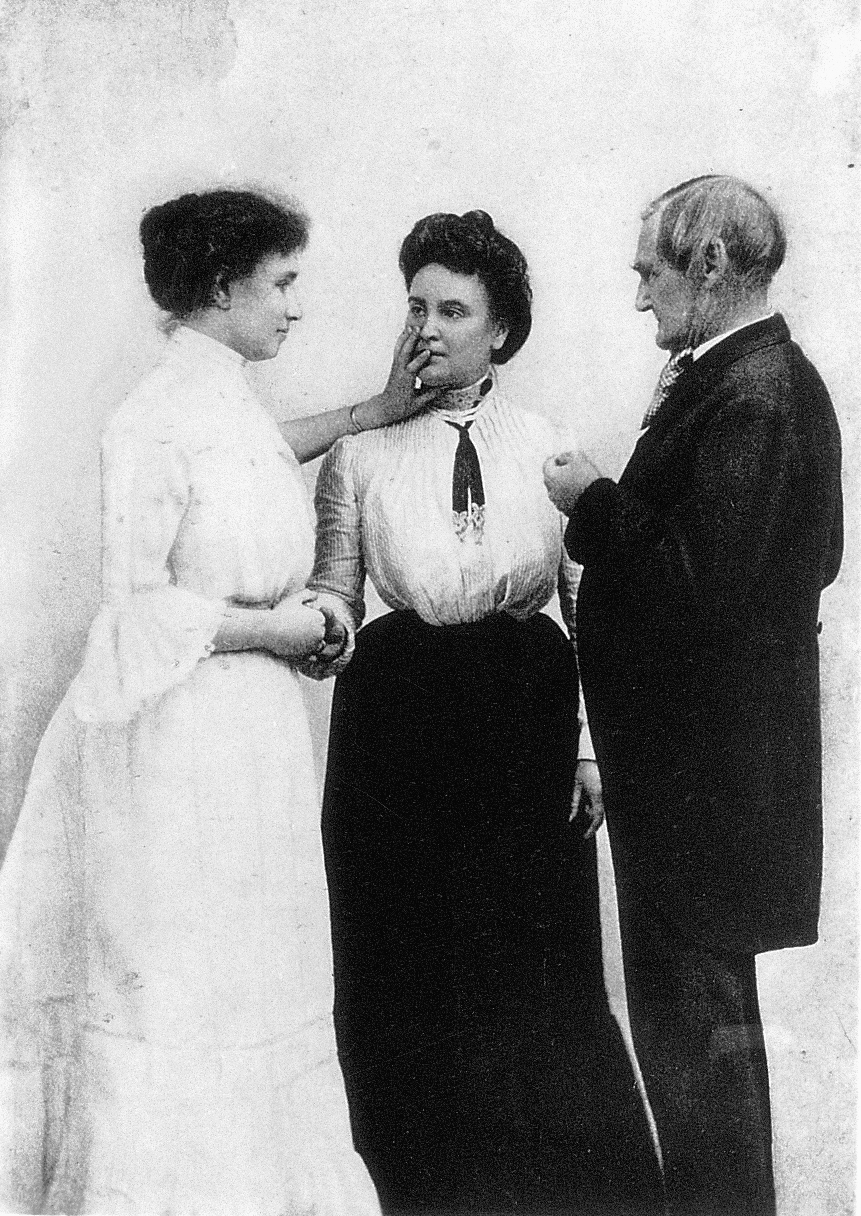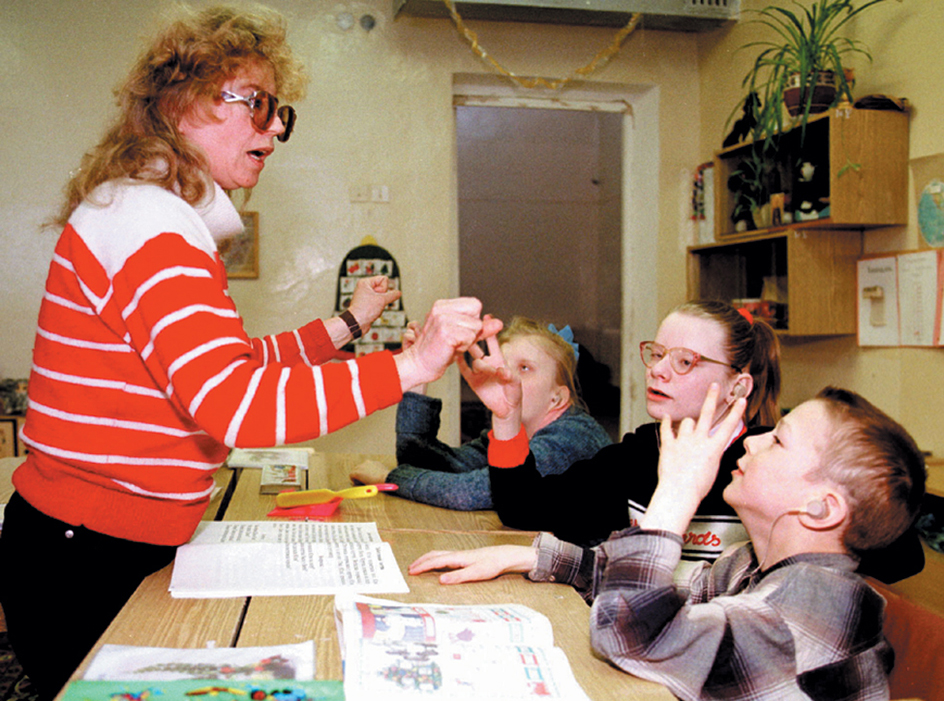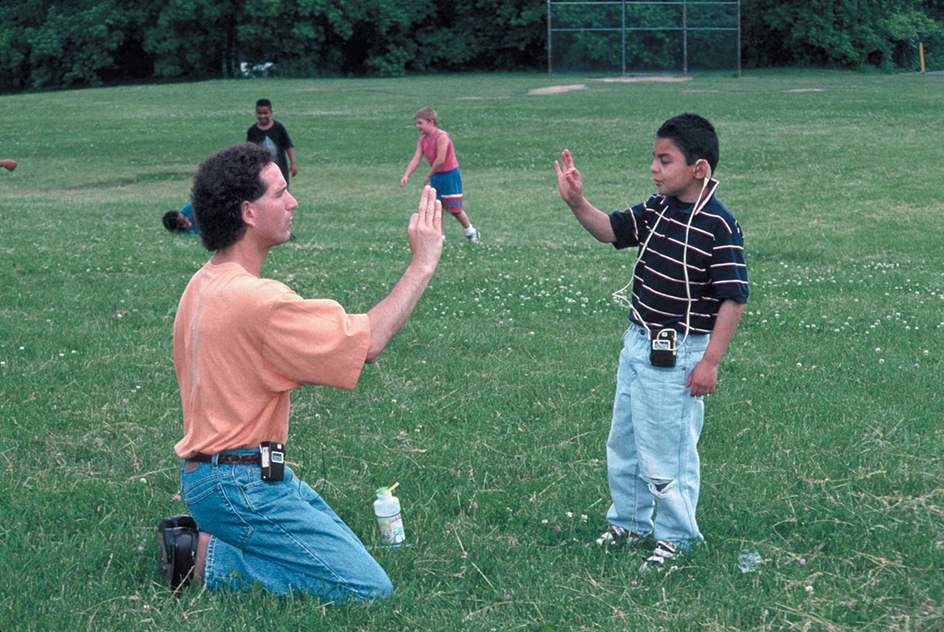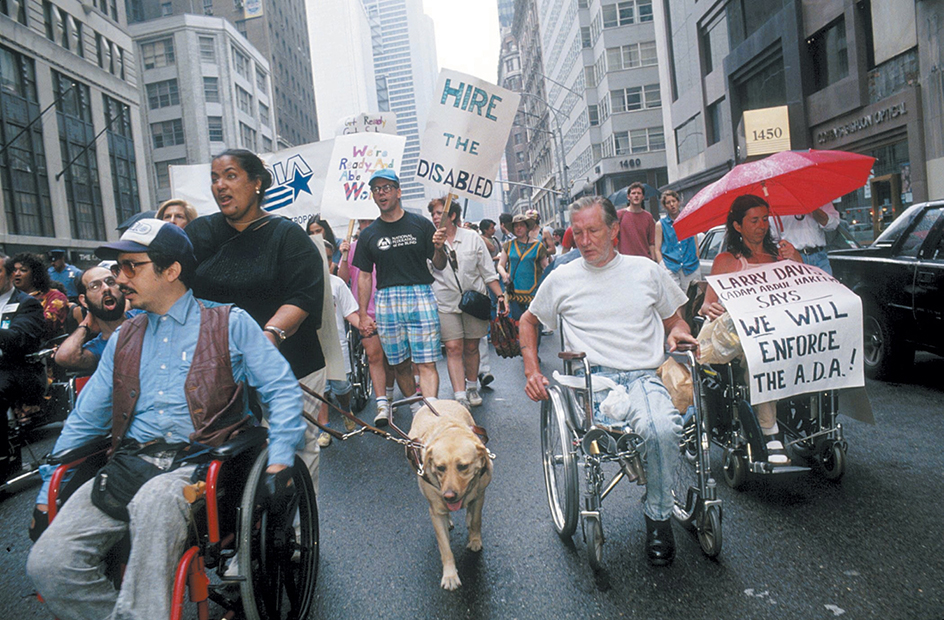Disability is a condition that affects a person’s ability to perform the activities of everyday life. Disability was once considered a biological impairment with a specific medical cause. Today, the term is more broadly defined as any physical or mental condition that substantially limits one or more major life activities. Some people are born with disabilities, while others develop them later in life. Common disabilities include blindness, deafness, deformity, loss of limbs, mental illness, intellectual disability, and muscular, nervous, and sensory disorders.

Disability has traditionally been described in medical terms. Many common disabilities are related to diseases or chronic conditions associated with aging. For example, heart disease may decrease a person’s strength and endurance. Strokes may produce paralysis or loss of speech. Arthritis and many bone diseases can lead to deformity and problems with mobility. Certain nerve diseases may result in blindness, deafness, and lack of coordination. Cerebral palsy is a disorder that damages the brain before, during, or after birth. Depending on what part of the brain is damaged, cerebral palsy can cause speech problems, intellectual disability, muscular weakness, or involuntary movements. In addition, accidents can cause a wide range of disabilities, including blindness, spinal damage, paralysis, and loss of limbs.
Throughout history, people have characterized those with disabilities in a variety of ways. Many people who were disabled tried to hide their condition, fearing that their disabilities would appear to be signs of weakness or inferiority. But since the mid-1900’s, attitudes toward disabilities have changed significantly, largely as a result of disability rights movements throughout the world. Such movements promote increased acceptance, rights, and visibility for people with disabilities.
Today, many people view a person’s disability as just one of many traits that define the person’s unique identity. Most people are not ashamed of their disabilities. Instead, they do what activists call “claiming their disability”—that is, they actively accept their condition and integrate it into their identity. Many countries have passed laws to provide assistance and to protect the rights of people with disabilities. In addition, the development of assistive technologies has led to devices and products that help people with disabilities carry out a wide range of activities.
Disability is not a condition to fear or shun. Instead, it is a natural part of the human experience, and it should be respected and supported. Today, millions of people with disabilities contribute to their communities, go to school or hold jobs, marry, and have children. They live productive lives just as people without disabilities do.

The scope of disability
There are many types of disabilities, both physical and mental, and they vary greatly in their causes, degrees, and treatments.
Mobility problems and other physical disabilities.
Many disabilities interfere with a person’s ability to move in certain ways. Some make it difficult or impossible to use one or both hands. Others interfere with the ability to walk or run. Still other disabilities involve the loss of a limb or other body part.

Illnesses and chronic conditions—such as diabetes, arthritis, strokes, and osteoporosis—may limit a person’s ability to climb stairs, walk, open doors, stand and reach, or write. But the use of assistive (aid-giving) devices, such as wheelchairs and walkers, can reduce many of these limitations. Other limitations can be overcome through physical assistance from other people or by the removal of architectural or structural barriers.
Hearing disabilities
range from mild hearing loss to complete deafness. They can be caused by problems at birth, illness, injury to the ears, exposure to noise, or aging. Hearing disabilities affect a person’s ability to communicate and receive information. However, these difficulties can be reduced or overcome through the use of hearing aids and other assistive technology devices, and the use of sign language. A system called closed captioning enables viewers with hearing impairments to understand dialogue on television. Printed captions appear on the screen during programs.

Speech and language disabilities
also affect a person’s ability to communicate. Speech disabilities include voice disorders of pitch, volume, or quality, as well as articulation and fluency problems, such as stuttering. Language disabilities affect the learning and use of words and grammar. Speech and language disabilities may be caused by strokes, brain tumors, head injuries, diseases, or other central nervous system problems. People with speech and language disabilities may have difficulty reading and writing, communicating with others, or talking on the telephone. But assistive technologies, speech therapy, and help from listeners can greatly reduce these communication problems.
Visual disabilities
range from mild loss of sight to complete blindness. Visual disabilities can be present at birth due to disease, birth trauma, or genetic conditions. They can also develop later in life as a result of strokes, injury, tumors, illness, or aging. Visual impairments can limit a person’s ability to get from place to place, to read and write, or to follow signs. Such disabilities can also result in difficulties using computers or other devices, such as telephones and automated teller machines. However, a number of methods can greatly reduce the limitations. For example, braille, a code of raised dots, enables people who are blind to read by touch. People with visual disabilities can also use a variety of adapted computers and other accommodations.

Mental illness and cognitive disabilities.
A mental illness is a condition that seriously affects a person’s thoughts, emotions, personality, or behavior. Common mental illnesses include schizophrenia, clinical depression, and anxiety disorders. Mental illness can affect a person’s concentration, stamina, and ability to manage time. It can also interfere with personal interactions and the ability to make or carry out plans. However, with medication and counseling, people can reduce these limitations. Many people who are mentally ill go to work or school, live in the community, and enjoy their lives.
Cognitive disabilities are conditions that affect the abilities of learning, perception, and awareness. Cognitive disabilities include intellectual disability, dementia, and traumatic brain injury. One of the most common causes of intellectual disability is Down syndrome, a genetic disorder that is present at birth. Other causes include accidents, brain injury, and inadequate nutrition. Dementia is a disability marked by a decrease in mental activity. Alzheimer’s disease, Parkinson disease, Huntington’s disease, tumors, and brain infections are the most common causes of dementia.

Like other disabilities, cognitive disabilities vary greatly in the limitations they create. However, with education and rehabilitation, individualized community supports and accommodations, effective health care, and adaptive equipment, most people with cognitive disabilities can live productive lives in the community.
Living with disabilities
A disability can affect many areas of a person’s life, both because of the disability itself and because of society’s attitudes and barriers toward disabilities.
Personal life.
People with disabilities may encounter a variety of challenges in their personal lives. For example, a physical disability may make it difficult to perform daily activities, such as dressing, eating, and maintaining personal hygiene. However, with assistive devices, help from others, and accessible buildings and public transportation, most people with disabilities can manage their personal needs.
Family life.
People with disabilities may face additional challenges in their family lives. Many challenges result not from disability itself, but from the attitudes of family members and members of the community.
Many families experience difficulty balancing the desire to protect a family member who has a disability with the need to respect that member’s independence. Siblings (brothers or sisters) of a child with a disability may feel guilty about not having a disability. But at the same time, those siblings may be jealous of the additional attention given to the child with a disability. Additional family challenges may arise if the traditional roles of family members are changed. For instance, when a parent is deaf and has a hearing child, the child may have to handle much of the family’s communication with the outside world, a role traditionally performed by parents.
People with disabilities may also experience financial difficulties that affect family life. Some family members may have to work extra hours or multiple jobs to pay expenses associated with a disability. Many countries provide family support programs to help families meet challenges related to disabilities.
Life in the community.
One of the greatest challenges of living with a disability is dealing with other people’s unfavorable or pitying attitudes toward disability. Such attitudes can form a social barrier and interfere with important personal relationships. For instance, a child with a disability may have difficulty developing friendships because he or she looks different from other children or cannot play the same games that others do.
Many societies view a person with a disability as a victim and someone to be pitied. Societies may also portray a well-known or successful person with a disability as “heroic” or as someone who has “overcome” disability. Such messages can contribute to psychological problems, such as low self-esteem and depression, for many people with disabilities.
The attitudes and accessibility of a community and its members greatly affect the everyday life of a person with a disability. Communities that lack accessible transportation systems, public buildings, recreational programs, health care, places of worship, and schools may isolate children and adults with disabilities. A single detail, such as a step at the entrance to a building or a lack of braille signs in a shopping mall, may lead a person to feel unwelcome. Community barriers can contribute to discrimination, social isolation, inadequate education, unemployment, and poverty for people with disabilities.

Needs, services, and supports
Like all people, people with disabilities need accessible and affordable education, health care, employment, housing, and transportation. People with disabilities often need special assistance, accommodations, or supports. This section describes some of the services and supports that are essential for people with disabilities.
Education
is extremely important for all children. Civil rights laws in the United States and many Western countries guarantee students with disabilities the right to a free, appropriate public education. Special education services help people with disabilities use their full learning abilities. Special education usually involves instructional modifications and the use of different materials, such as recorded books instead of printed ones. It may also involve simplifying the language of instruction or allowing students more time to take a test. Special education services can also include the use of aides, tutors, and special therapies and assistance to help students learn.
People often disagree over where the education of students with disabilities should take place. Many parents, people with disabilities, and advocates call for a system of inclusive education. They believe that students with disabilities should be included in regular classes, with any necessary services and aides provided there. Others believe that appropriate education for students with disabilities can best be provided in separate special education classes.
Health care and assistive devices.
Accessible, effective, respectful, and affordable health care is essential for individuals with disabilities and their families. Proper health care often requires specialized services for certain disabilities. Some people may require physical, occupational, or speech therapy, or specialized equipment, such as portable breathing machines.

Assistive technology devices help many people with disabilities carry out their daily activities. For example, a wheelchair helps a person with mobility problems to move around the home, workplace, and community. Screen readers enable someone who is blind to use a computer. Assistive listening devices can help a person with a hearing disability enjoy a play. There are hundreds of assistive technology devices available. However, many people with disabilities lack the information or money to obtain the technology that would help them.

Employment.
Most people—even those with significant disabilities—have the desire and the ability to work, with proper accommodations and supports. However, in many countries, including the United States, the rate of unemployment for people with disabilities is significantly higher than that for people without disabilities. Seeking to address this situation, many governments have established laws that ban employment discrimination based on disability. Governments have also established programs that help remove barriers and provide improved opportunities. Government-funded vocational rehabilitation programs help many people with disabilities to join the work force.
Housing and transportation
must be accessible and affordable for people with disabilities. A person who uses a wheelchair, for example, needs ramps instead of stairs, wide doorways, and other structural adaptations. Many nations have established government programs to address the housing needs of people with disabilities and other groups. Nations have also passed laws that require basic transportation services to be accessible to people with disabilities. For example, many transit services must provide ramps or lifts for people in wheelchairs, and signs in braille for customers who are blind.
Attitudes toward people with disabilities
Disability has been part of the human experience since the beginning of history. But the ways communities have treated people with disabilities have varied significantly throughout the ages and across cultures.
Early beliefs.
During ancient times, people with disabilities were thought to be incapable, threatening, or even evil. Communities often drove them out or left them to die. In Rome, parents could legally drown disfigured infants. During the Middle Ages, the period from about the 400’s through the 1400’s, people ridiculed individuals with disabilities and regarded them with suspicion. Some nobles used people with physical disabilities as court jesters. Many women with disabilities were burned as witches.
Attitudes toward disabilities began to change in the 1700’s and 1800’s. Many cultures began to pity people with disabilities and to treat them with special care and compassion. In Paris in 1755, the French clergyman Charles Michel de l’Epée founded the first free school for the deaf. In 1824, Louis Braille, a French student, invented the braille reading system. In 1857, the Columbia Institution for the Instruction of the Deaf and Dumb and the Blind (now Gallaudet University) opened in Washington, D.C. In the United Kingdom, the Royal National Institute for the Blind was founded in 1868 to promote the welfare of blind people. Despite these advances, many people still felt that people with disabilities brought shame on themselves and their families.
The 1900’s
were a time of great change for people with disabilities. Advances in medicine and science saved the lives of many people with health-related and injury-related disabilities. In addition, nonprofit organizations helped support children and adults with physical and sensory disabilities. New groups campaigned for disability rights, including the American Foundation for the Blind, founded in 1921, and the League of the Physically Handicapped, founded in 1935.
While many cultures offered increased support for people with disabilities, others continued to view disability unfavorably. Some governments even carried out sterilization programs, aimed at preventing people with disabilities from having children, and euthanasia programs, aimed at killing people with disabilities. From 1939 to 1941, the German dictator Adolf Hitler ordered the murder of nearly 100,000 Europeans with disabilities.
Following World War II (1939-1945), many veterans who had acquired disabilities in the war demanded medical and vocational rehabilitation. Military hospitals established rehabilitation centers, and many other hospitals set up facilities to help people with disabilities. In 1972, a polio survivor named Edward Roberts founded the Center for Independent Living (CIL) in Berkeley, California. The center was a community-based organization that emphasized dignity, peer support, civil rights, and equal access for people with disabilities. In the following years, hundreds of CIL’s began operating throughout the United States and other countries.
During the late 1900’s, the U.S. Congress passed several important laws to help people with disabilities. The Rehabilitation Act of 1973 prohibits unfair treatment of individuals with disabilities in programs or activities that receive government funds. The act also requires many federally funded businesses to make an effort to hire qualified people with disabilities. The Education for All Handicapped Children Act of 1975 orders states to provide a free education for any child with a disability who is of school age. Canada has a similar law.
The Americans with Disabilities Act of 1990 protects people with disabilities from discrimination by private employers. It requires that public buildings and transportation services be accessible to people with disabilities. The act also orders telephone companies to provide telephone relay services that allow people with speech or hearing disabilities to make and receive calls.

Many other governments throughout the world have passed similar disability rights laws. The United Kingdom’s Disability Discrimination Act of 1995 prohibits employers from discriminating against people with disabilities. It also requires people providing goods and services to make suitable provisions for people with disabilities. The Education Act of 1996 requires education authorities to provide educational as well as noneducational facilities for students with special educational needs.
Australia’s Disability Services Act of 1986 ensures that people with disabilities receive services that enable them to live and work independently in the community. The Disability Discrimination Act of 1992 prohibits various forms of discrimination against people with disabilities.
South Africa’s Constitution, adopted in 1996, prohibits the state from discriminating against anyone on a number of grounds, including disability. These constitutional requirements led the South African government to bring in the Employment Equity Act of 1998 and the Promotion of Equality and Prevention of Unfair Discrimination Act of 2000.
Recent developments.
The disability rights movement has continued to grow. In many cases, disability activists have helped reshape how buildings and facilities are arranged, and how services and supports are funded and provided. In addition, the rights movement has led to a field of university study called disability studies. The field focuses on the history, literature, culture, and politics of the disabled community. As a result of these and other advances, disability has become increasingly accepted as a natural part of the human experience.
